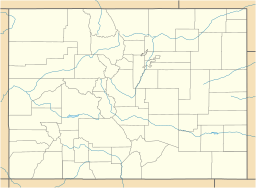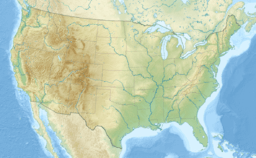Marfell Lakes facts for kids
Quick facts for kids Marfell Lakes |
|
|---|---|
| Location | Boulder County, Colorado |
| Coordinates | 40°01′09″N 105°04′47″W / 40.0192°N 105.0797°W |
| Surface elevation | 5,223 feet (1,592 m) |
The Marfell Lakes are two important bodies of water located in Boulder County, Colorado. These lakes are actually man-made reservoirs. They help store water for the nearby communities of Lafayette and Louisville in the Colorado state.
Contents
What are the Marfell Lakes?
The Marfell Lakes are known as Marfell Lake 1 and Marfell Lake 2. They are not natural lakes. Instead, they are reservoirs, which are like big storage tanks for water. People build reservoirs to collect and keep water. This water can then be used for many different things.
Why are Reservoirs Important?
Reservoirs like the Marfell Lakes play a big role in our daily lives. They help make sure that homes and businesses have enough water. This water is used for drinking, cooking, and even watering gardens.
- Drinking Water: The water stored in reservoirs is often treated to make it safe to drink.
- Agriculture: Farmers use reservoir water to irrigate their crops. This helps grow the food we eat.
- Recreation: Sometimes, people can use reservoirs for fun activities. These might include fishing or boating.
- Flood Control: Reservoirs can also help control floods. They hold back extra water during heavy rains.
Where are the Marfell Lakes Located?
The Marfell Lakes are found in Boulder County. This area is in the state of Colorado, in the United States. They are close to the towns of Lafayette and Louisville.
Elevation of the Lakes
The lakes are located at a high elevation. Their altitude is about 5,223 feet (or 1,592 meters) above sea level. This means they are quite high up in the landscape.
How Reservoirs are Made
Building a reservoir usually involves creating a large dam across a river or stream. The dam blocks the water flow. This causes the water to back up and form a large lake behind the dam. The Marfell Lakes were created in a similar way to serve the needs of the local population.



